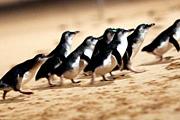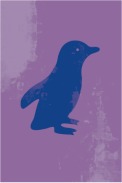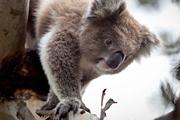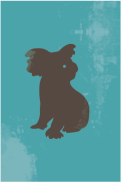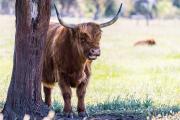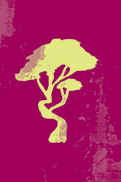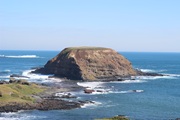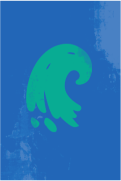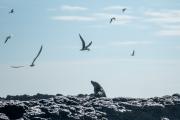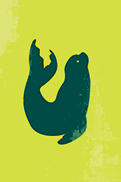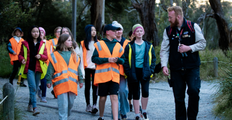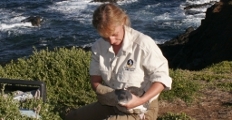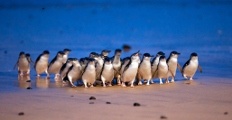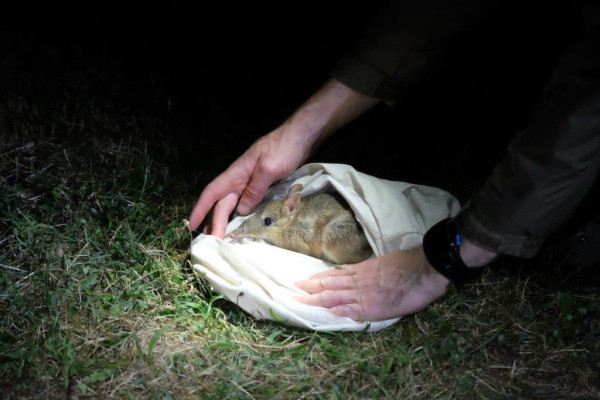We acknowledge the Traditional Owners of the land on which we live, work and learn, the Bunurong. We pay our respects to their Elders past and present.
Historical Timeline
| For thousands of years |
There is still much to learn about how the Bunurong lived within the landscape of Milawul (Phillip Island). The high concentration of middens around what we now call the Summerland Peninsula indicates that Milawul was rich in natural resources. The Bunurong collected shellfish, fish, short-tailed shearwaters (muttonbirds), and other wildlife, as well as ochre and various natural materials for food and cultural practices. There is a vibrant modern Bunurong culture on and around Milawul, and the Nature Parks plays a vital role in healing country and empowering the Bunurong to make decisions about their country. We acknowledge that the following sequence of events was imposed on the First Nations of Australia, resulting in the loss of their lands, injustices towards their people, and restricted access to cultural practices. |
| Late 1700s |
Europeans began entering the area by boat to hunt seals. |
| 1798 |
George Bass entered the bay of Western Port, naming it as well as the site known as Seal Rocks. His party also trialled agricultural activities on Churchill Island. |
| 1842 |
The McHaffie brothers rented Phillip Island, clearing vegetation with fire and introducing livestock to graze the land. This dramatically impacted the landscape, resulting in very little remnant vegetation from before this era. In the 1880s, Patti Phelan acquired the land now known as the Summerland Peninsula. |
| 1920s |
Phillip Island residents Bern Denham, Bert West, and Bert Watchorn began taking tourists by torchlight to see the little penguins’ nightly arrival on the beach at Summerland Peninsula. The first access road was built in late 1927, followed by construction of a golf course, and Summerland Peninsula was divided into 774 housing allotments. |
| 1924 |
The State Government established a Fauna Reserve at Swan Lake to protect the short-tailed shearwaters. |
| 1930s |
Spencer and Alexandrina Jackson donated four hectares of land on the Summerland Peninsula to the ‘people of Victoria’ for the protection of the little penguins. The first bridge to Phillip Island was built in 1939. |
| 1955 |
The then Department of Fisheries and Wildlife, recognising the impact the Summerland Estate on little penguins, established a large reserve over the penguin colony. The Shire of Phillip Island, in conjunction with the National Parks and Wildlife Service, assumed responsibility, with Bert West as the manager. Fences and concrete viewing stands were erected to manage public access and enhance the little penguin nightly viewing experience. |
| 1966 |
Seal Rocks was declared a State Fauna Reserve. |
| 1968 |
The Penguin Study Group established, launching one of the longest continuous species research programs in the country. |
| 1984 |
The Phillip Island Penguin Reserve Committee of Management was formed, comprising local Shire, tourism, scientific, conservation, and government representatives. This committee managed only a small portion of the Summerland Peninsula, including the Penguin Parade, Swan Lake, and the Nobbies. |
| 1985 |
The Penguin Protection Plan was announced to include scientific research, the preparation of a management plan, a fox control program, and the buyback of the housing estate established on the Summerland Peninsula. |
| 1988 |
The Penguin Parade viewing infrastructure was substantially upgraded to include a new visitor centre, displays, boardwalks, and viewing platforms. |
| 1991 |
The Nature Parks is now responsible for the Koala Conservation Centre, which has opened to the public. |
| 1996 |
Phillip Island Nature Parks was established, incorporating lands previously managed by the Shire and the Department of Conservation and Environment. The buyback and removal of the houses on the Summerland Peninsula continued. |
| 2010 |
The buyback of the Summerland Estate was completed, followed by the removal of the final houses and associated infrastructure. An ongoing rehabilitation program was put in place to ensure that penguins and other wildlife continue to thrive on the Summerland Peninsula. |
| 2016 |
Phillip Island Nature Parks established its first Reconciliation Action Plan, followed by its first MOU with the Traditional Owners of Milawul. |
| 2017 |
Phillip Island was declared fox-free after a 20-year intensive eradication program funded by the State Government, visitors to the penguin parade, the Penguin Foundation, and the Helen McPherson Trust. The Bunurong Land Council Aboriginal Corporation was appointed as the Registered Aboriginal Party for Milawul under the Victorian Aboriginal Heritage Act 2006. |
| 2018 |
Eastern barred bandicoots were introduced to Phillip Island after being declared Extinct in the Wild in its usual habitat range of Western Victoria. Bandicoots have thrived in the fox-free environment, and Phillip Island continues to be a sanctuary for this threatened species. |
| 2019 |
A new Penguin Parade Visitor Centre was established to accommodate the volume of visitors from across Australia and overseas. The new centre shares the stories of penguin care and recovery, as well as their home in recent decades. The Nature Parks formed the Bass Coast Reconciliation Network in partnership with Westernport Water, Bass Coast Shire Council, and Bass Coast Health to drive reconciliation and recognition actions on the Bass Coast. |
| 2022 |
The Nature Parks developed its first Aboriginal and Torres Strait Islander Employment Strategy as part of our commitment to diversity and inclusion in the workplace. |
| 2024 |
Bush stone-curlews have been reintroduced to Phillip Island, last seen there in the 1970s. Believed to be impacted by fox and cat predation, these birds now have a second chance at life in the island. |





